

Tanya Mohapatra spoke to some artists actively creating work that is aiding and changing the shape of protest culture in India
Be it the Beat movement of 1950s USA or the renaissance of 15th century Europe, art has always aided revolution. It is no surprise then that the dynamics of protest culture in India is evolving at the hands of popular culture, giving new meaning to how people dissent. For more than a month now, student and civilian led agitations alike, have maintained a consistent theme whilst agitating against the controversial Citizenship Amendment Bill. Relying on street plays, slogans of Azaadi (Freedom) Hum Kagaz Nahi Dikhayenge (We will not show papers), public readings of the constitution, lectures on citizenship, poetry, songs and street art—a movement has sprung up across the nation.
The ingemination of words or phrases of these songs and poems can be seen around in different posters, online by the masses to express their dissent or just as a zealous rhapsody by the protestors. We caught up with some of the people behind these to understand the idea of art aiding dissent.
Poet and lyricist Hussain Haidary, who’s poem Hindustani Musalmaan went viral amidst the backdrop of the anti CAA NRC protests, envisions his poetry as “a lamp trying to light many more lamps.” His poem is not only an expression of his dissent but a cry to unite people and a call for allies. “Poetry has always been a part of revolution/protest literature. The listener/protestor may not be able to remember the entire poem but will remember that one recurring phrase or word that will define the entire essence of the poem. Such a manner of poetic form of participation delivers the gist or nuance of the poem. Thus my poetry helps communicate the message or churn the audience’s thoughts,” he says.
Ashwin Chacko, a Dublin based artist has been expressing his dissent via provocative art on social media. “Most of my work deals with the idea of storytelling and introspection of culture and language. So that can be most easily used in case of India where diversity is a hallmark of this nation.”
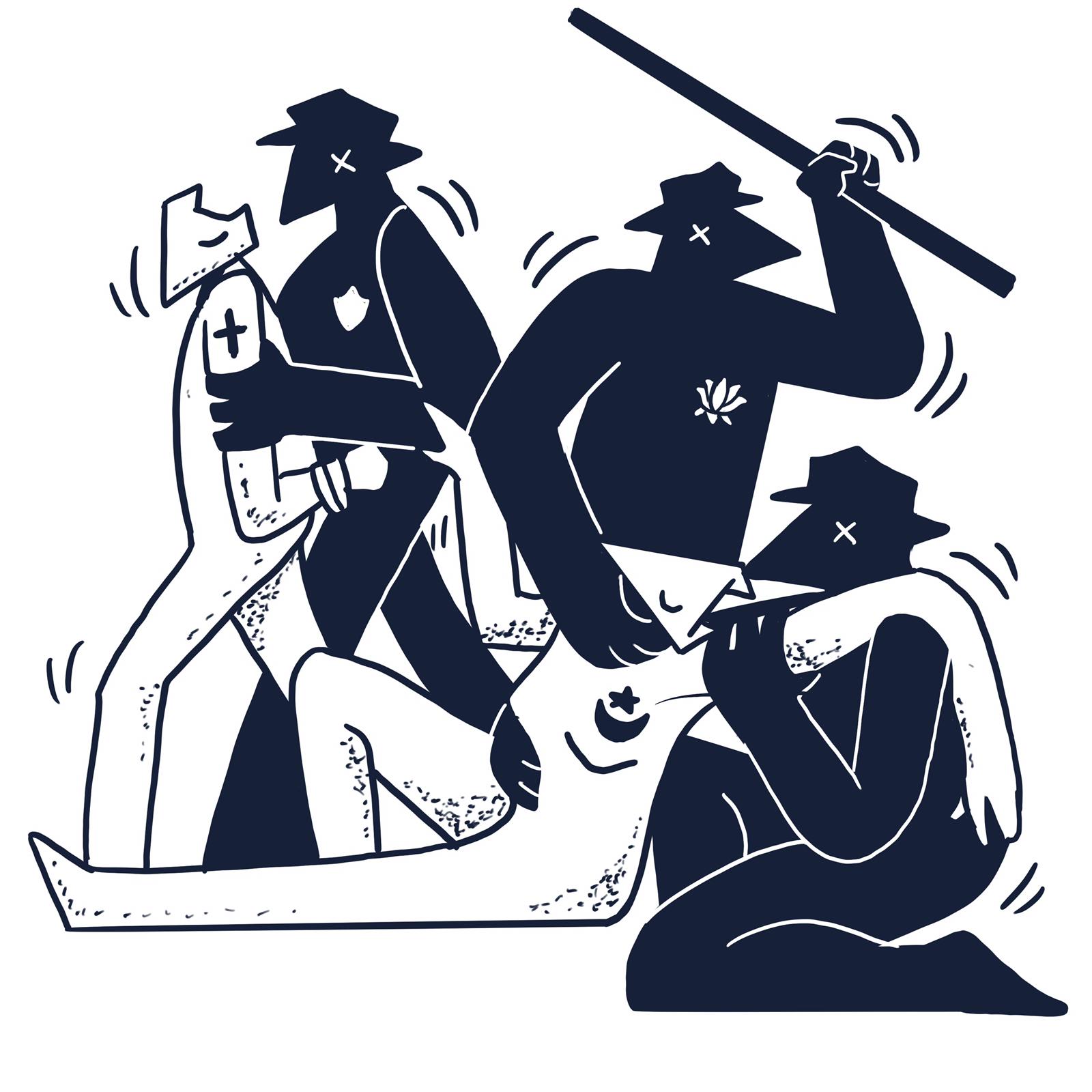
Ashwin Chacko
According to Mumbai based artist Sid Mishra (smishdesigns), people naturally gravitate towards art in difficult times to find their own voice and to heal.. “In times of resistance, people follow those who can speak truth to power and art becomes a great outlet for people to channelise their emotions and fight the systems articulately.” Mishra, who started expressing tremendously through art on her Instagram page over the past year says, her driving force for creating art has always been an attempt to express what people are thinking or feeling, but are unable to say. “I think in times like these, artists, poets and creatives need to come forward and express more to mobilise and enable people to voice out their feelings truly. Our society is already very emotionally repressed and it is healing to find an outlet in the arts. If people can associate their internal suffering, angst or thoughts with my art, then I want to keep doing what I do and try my best to make more art that connects with the collective consciousness.”, says Mishra.
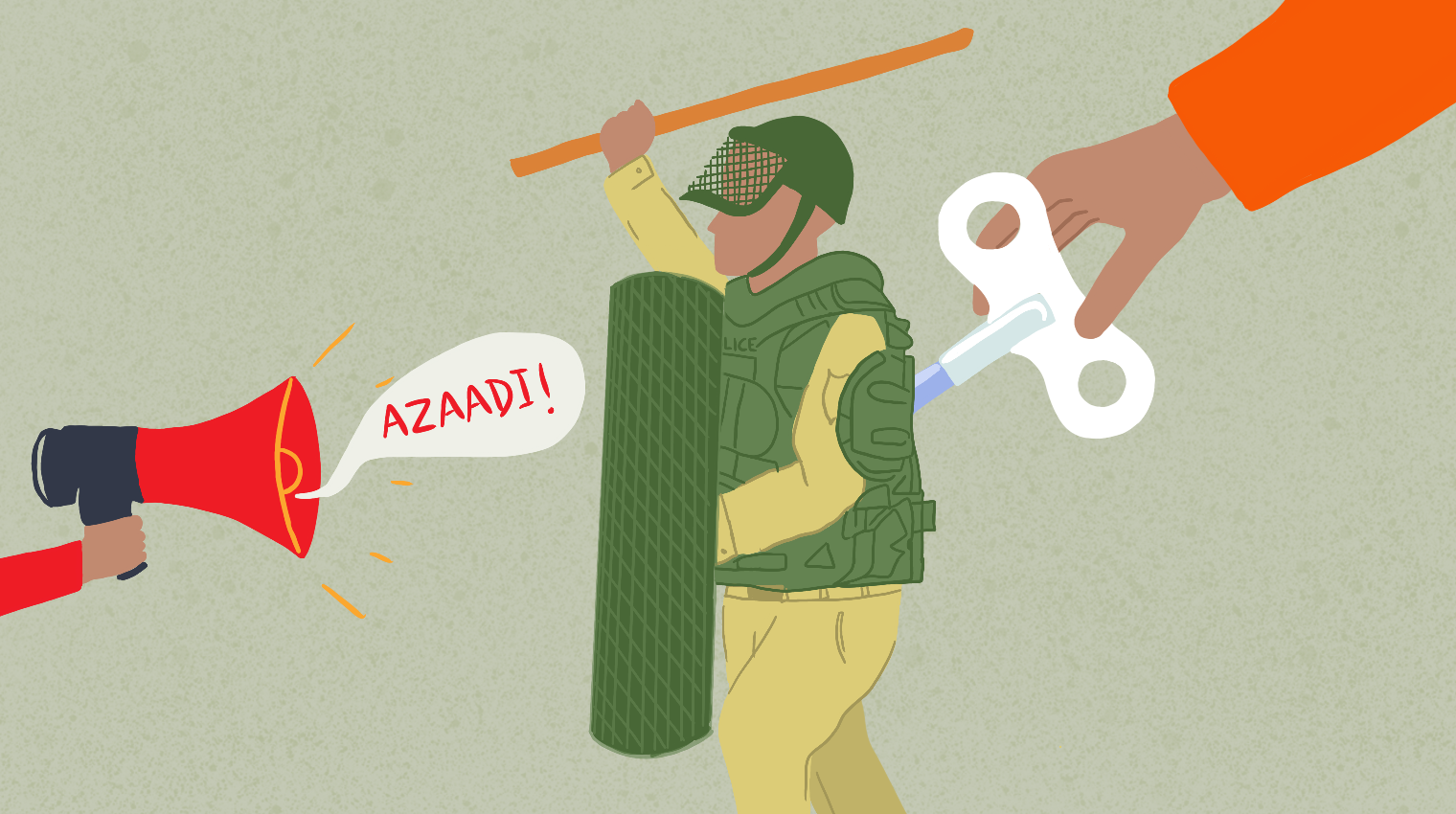
Sid Mishra
Calcutta based artist, Anirban Ghosh emphasises on how art resonates with a wider audience, going beyond the limits of language. He says, some of the best works produced historically, have been in times of conflict. “I feel for most of us, peace loving citizens who take pride in our democracy. A lot of us artists may not be in a position to confront police brutality, like how the brave champions of JNU. Jamia and Shaheen Bagh are doing but we can channelise our dissent through art.”
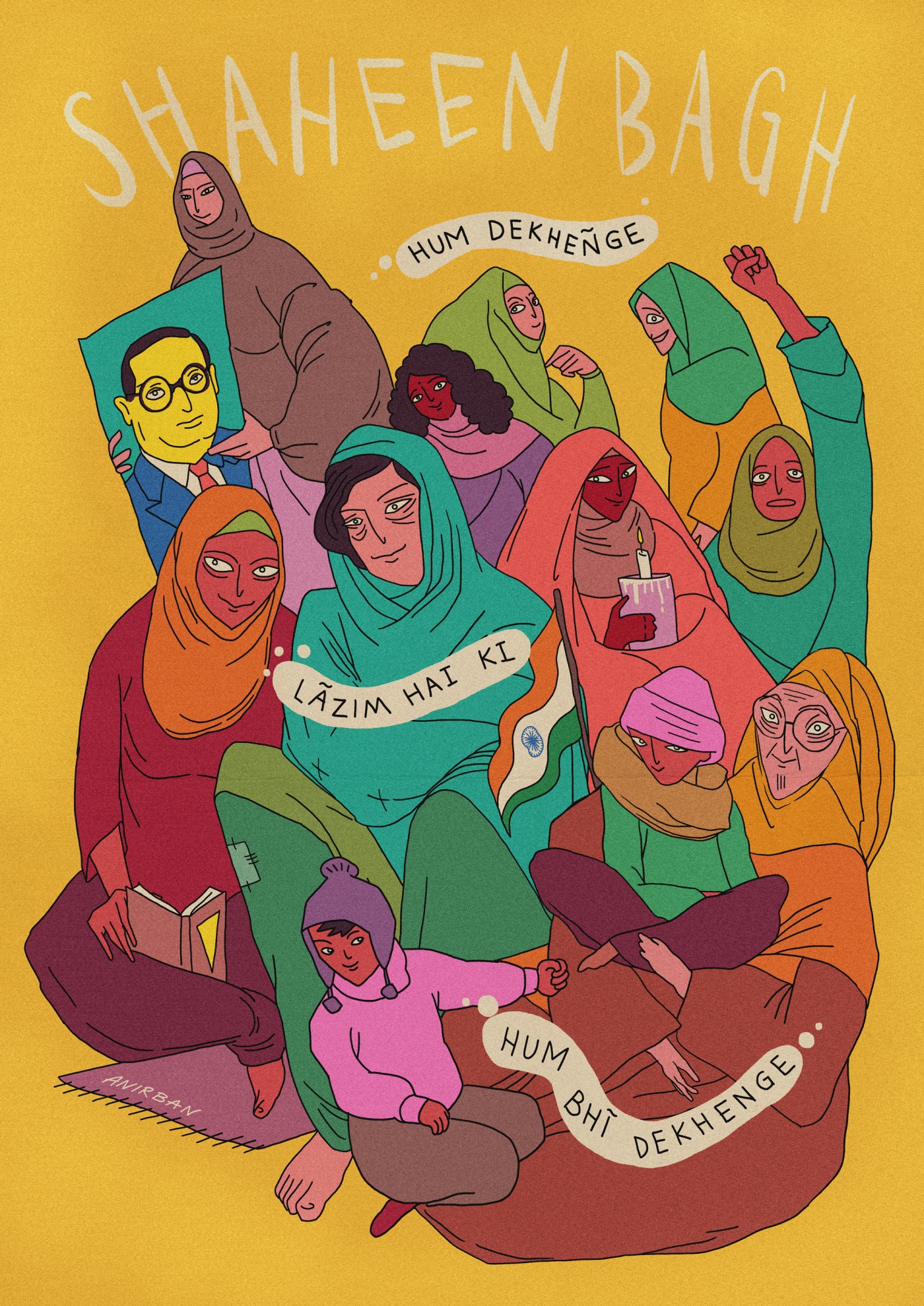
Anirban Ghosh
This resonance of popular culture and protest, according to artist Mira Malhotra is in part because of a simmering rage that never found expression. “Now that people are standing up, they’ve found their voice in unity and solidarity. Injustice borne from years of oppression conjures many strong emotions, and its healthy expression is protest art. Good protest art always penetrates into the mainstream and becomes iconic. As artists, it’s our responsibility to communicate well and accurately. It’s important for us to amplify certain salient information that reveals truth, by drawing attention to it and making it engaging.” Malhotra says, well designed posters, memes, explainers can break down complex concepts and help readers and viewers imagine possible outcomes and realities. “If you are successful in making content relevant to the masses, it will then be able to enter the mainstream and mobilise many. My personal preference is to educate until you can educate no more. I feel art does that so well because it communicates in a way that seems less obvious to the viewer. It’s easier to reach someone through humour, or by appealing to them emotionally. I made this poster because women have been at the forefront of the protest—from women at Shaheen Bagh to the attacks on the students of Jamia, Aishe Ghosh and Deepika Padukone, I wanted to show the strength of a woman, not in brute force but in her ability to resist so many forces against her- her ability of endurance.”
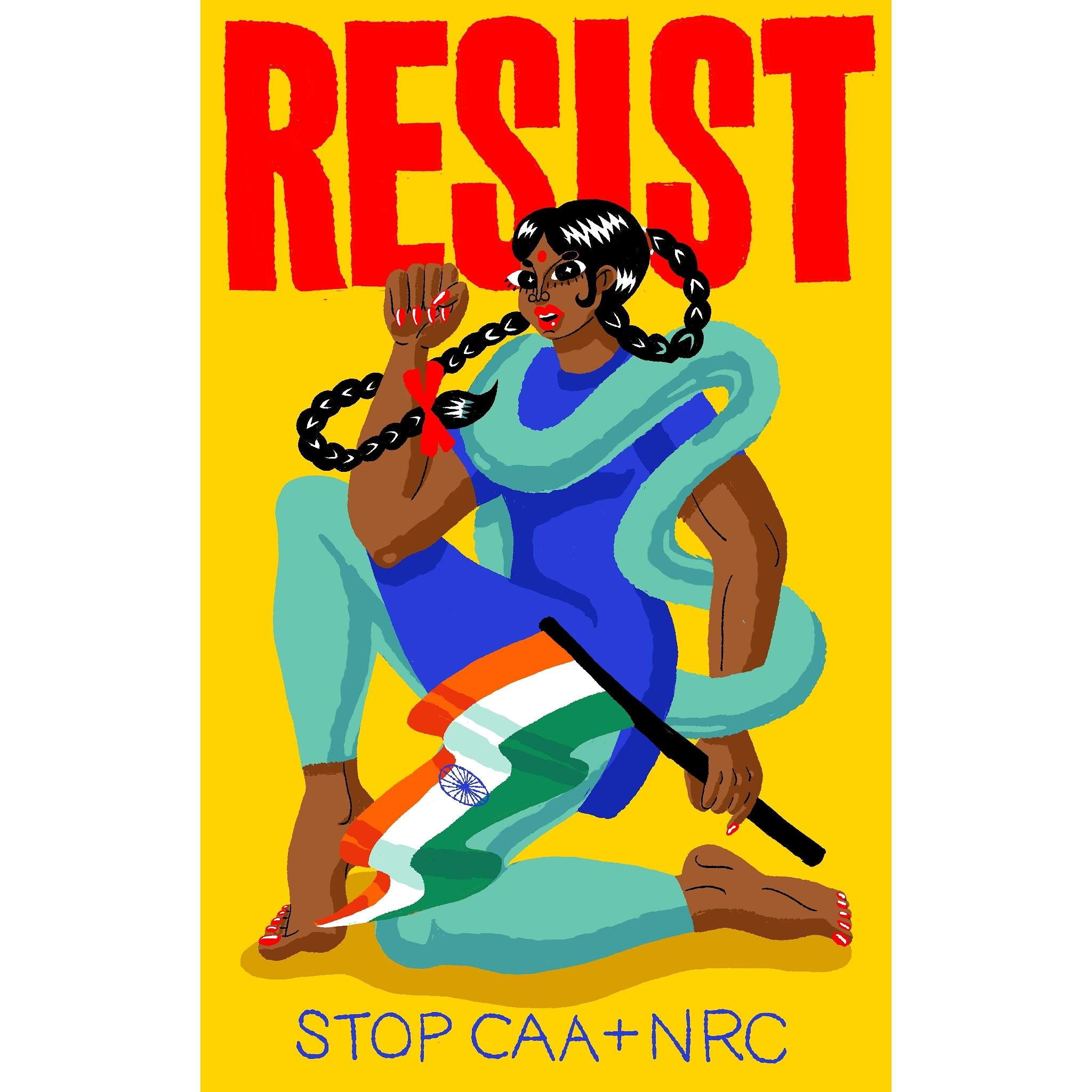
Mira Malhotra
Artist Abhishek Choudhury feels that art and poetry have always been the main instruments of protest culture. “However, meme culture made this medium quicker to create, share and consume. Memes and art made communication of intricacies of laws like CAA and NRC more accessible to the masses. Memes, digital art and poetry has also helped in recent times, to allow people who can’t physically be present at protests,” he says. The Guwahati based artist puts great emphasis on how various virtual communities like Creatives Against CAA and Ozin Patoki have become portals for digital artists and creators to share their skills and resources to the movement digitally.
Webcomic activist, Rachita Taneja popularly known as Sanitary Panels, has credited social media as a great platform for expressing dissent. “Art spreads far and wide, especially on social media. The comics I make on my Instagram page has spread farther and wider than if I would have written an article expressing my dissent or opinion, unless I’m someone who is influential and has built a reputation for myself.” Taneja emphasised on the strength of the digital space, “My work can easily get viral through a post or a tweet because it’s a single image. Online is a public space which will fetch you attention for your work and thus it becomes accessible to consume or to create.” As an avid campaigner on various social issues, she sees her art as an essential tool to mobilise people. “My art is mostly call to action, educational or for the purpose of creating visual for people that they can share. One of the coolest things I have seen in the anti CAA-NRC movement is to see my posters of my comic in various different protests (in India and abroad) so that is something empowering and inspiring for me to continue doing what I do” says Taneja.
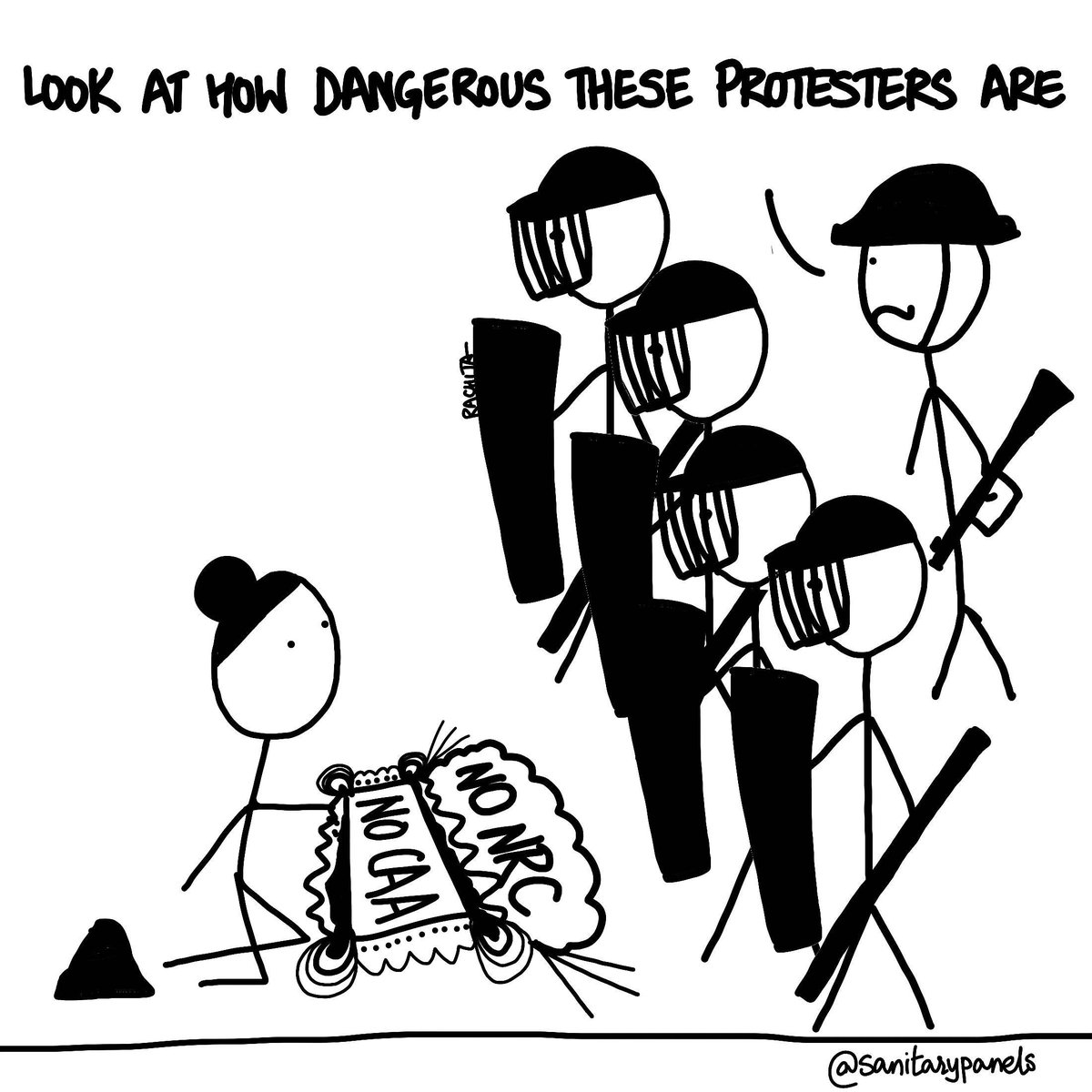
Rachita Taneja
The confluence of the dissent by the masses and the culture that they consume very likely meet at a tangency. The dynamic field of communication grows with its ever changing landscape of the audience. In this day and age, the digital space provides an accessible platform for such a confluence. But the mobilisation offline are conjoined by a space for the ones who do not have its online accessibility. But together they work in an alliance in keeping each other and the dissenting voices alive.